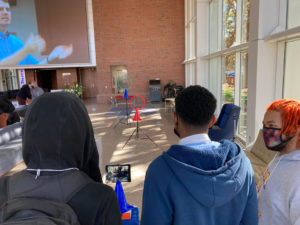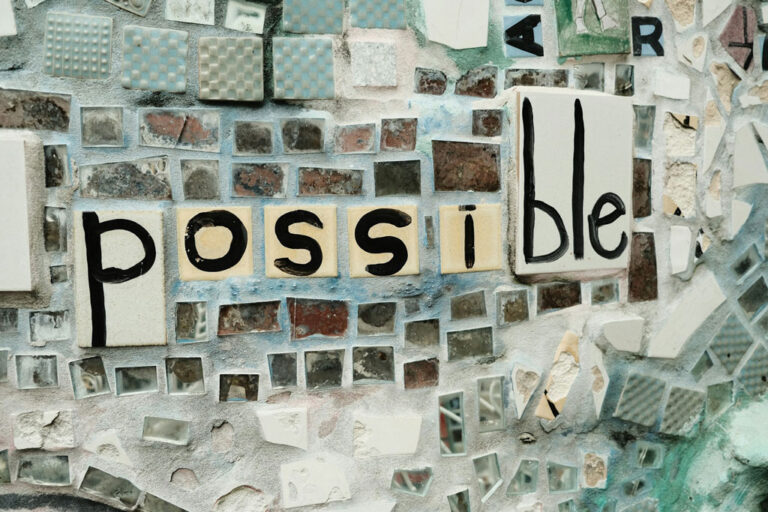Strengthening the Bridge Across the Digital Divide
AAG Reflects on Impacts of the Initiative, Announces New Recipients
For a small tribal college in northern Michigan, lacking basic resources for students was a regular issue, even under normal circumstances. With the onset of the COVID-19 pandemic in 2020, it was only exacerbated.
“When the pandemic began and we had to transition to online curriculum, the only way for our students to succeed was to provide them with laptop computers that they could take home,” says Andrew Kozich, Environmental Science Department Chair at Keweenaw Bay Ojibwa Community College (KBOCC).
This problem, however, was not limited to the students at KBOCC. Many Black, Indigenous, and People of Color (BIPOC) geography students across the country were left without access to the computers, internet, or software they needed to complete their coursework remotely, as distance learning became the new normal. In response, AAG’s COVID-19 Rapid Response Task Force created the Bridging the Digital Divide (BDD) program in mid-2020. Its purpose was to provide BIPOC geography students at minority-serving institutions (MSIs) with technology for virtual learning due to COVID’s disruption.
BDD distributed $238,000, with an additional $50,000 contribution from Esri and $10,280 from AAG members, to 23 MSIs in its first year. The funding provided quick relief to geography educators to put tools such as laptops and software directly into their students’ hands.
In Michigan, KBOCC students now had the resources that their small community, high in unemployment and low in income, had previously lacked. Andrew Kozich continues, “…thanks to the AAG funding, we were able to ensure that every Environmental Science major had a new computer and could continue their coursework from home.” These resources were significant in not only retaining students in geography-related programs, but in engaging them in coursework and in recruitment for the following academic year. KBOCC saw an increase in Environmental Studies enrollment thanks to the now-available digital resources.
This success is mirrored elsewhere. Quinette Otter, a student at United Tribes Technical College who received a laptop through BDD, said, “I will be forever grateful for this gift. This semester my children and I were 100% virtual and sharing one computer. It was a struggle. There were many days that I was unable to attend classes because it overlapped with their classes. This is a lifesaver and will ensure I can be in class every day.”
Other geography instructors used BDD funding to maintain communication and classroom experiences with their students when in-person office hours and in-person teaching were no longer offered. One instructor invested in a screen and projector to channel a traditional classroom setting and alleviate the virtual nature of the new virtual reality. A common thread in BDD’s first year was how substantial the impact of the funding was, contributing essential elements in MSI geography programs’ work to retain, engage, and recruit both current and future students.

Recipients and Expanded Scope in 2022
In 2022, AAG provided a second round of funding of $238,000 toward the future of the next generation of BIPOC geographers. Year One of the program highlighted other areas in which BDD’s funds could be allocated, in addition to digital resources.
We’re excited to announce that in 2022, 22 MSIs and related faculty have been approved to apply funds towards not just digital resources but non-digital expenditure as well such as student scholarships, fieldwork transportation fees, stipends for external guest lecturers, and other uses that educators see fit to help strengthen their programs and support their students.
AAG seeks to bridge the distance between BIPOC geography students and success through equitable access to equipment, tools, and other educational resources. By refining BDD into a program that is reflective of each individual institution’s specific needs, we hope to better serve this group of students that have faced long-standing systemic inequities. We know that the results will last far longer than COVID’s temporary, distance-induced environment.
In addition to Bridging the Digital Divide, several of AAG’s projects and initiatives are designed to have a positive impact on attracting and attaining students of color to the discipline of geography. Here is a sampling of programs and approaches AAG is undertaking right now:
- The new online Guide to Geography Programs Map contains an MSI filter, which allows users to see all MSIs in the United States that offer geography courses, programs, and degrees.
- Community colleges are essential for the growth of geography programs and retention of geography students. Through Healthy Departments, the AAG is working with community college instructors to facilitate change in community college perception, provide resources for community college students and instructors, and highlight the contributions of community college geographers to the broader discipline.
Learn more about AAG’s new framework and plan for diversity, equity, and inclusion.


